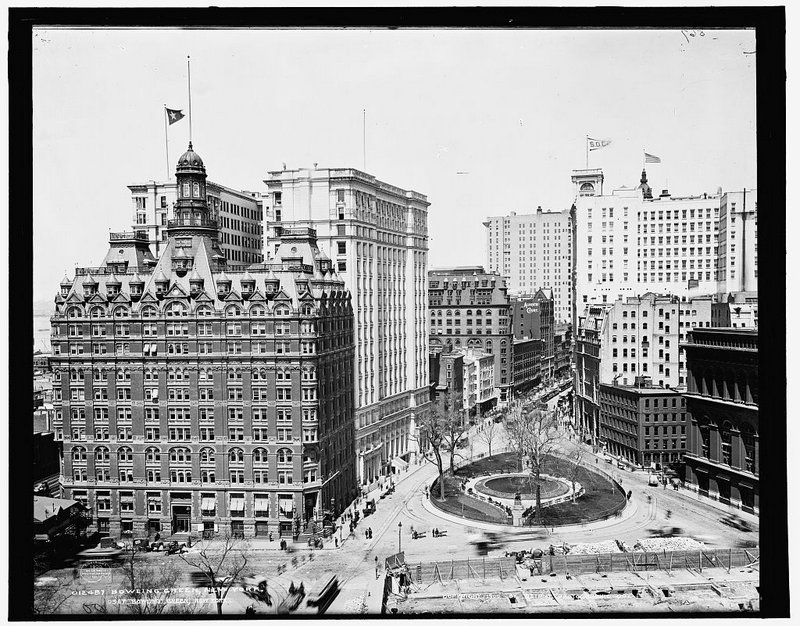 Image from Library of Congress. Bowling Green before the Customs House was built.
Image from Library of Congress. Bowling Green before the Customs House was built.
In a fitting twist of fate, the site currently occupied by the Smithsonian National Museum of the American Indian was where Fort Amsterdam was located in the original Dutch settlement of New York City. When the Fort was demolished in 1790, as authorized by the New York Legislature, the ground was pledged for “public buildings and works of defence.”
Discover more remnants of Dutch New Amsterdam on an upcoming walking tour!
Tour of The Remnants of Dutch New Amsterdam
The land was sold to the City in 1814, subdivided and auctioned off within a year. Originally, the landowners agreed that the Battery and Bowling Green would remain in public use but soon prominent New Yorkers built houses with front yards and stables on the land.
This vintage photograph shows Bowling Green from circa 1900 during the construction of the new Alexander Hamilton Customs House, on what were former steamship offices. Today you can visit the Cass Gilbert masterpiece that now houses the Museum of the American Indian (and where you go to get Global Entry!).





